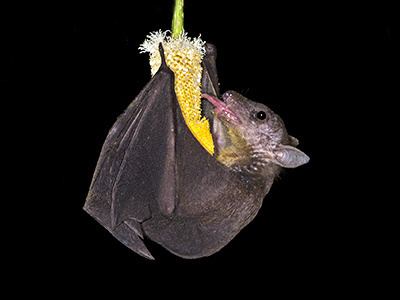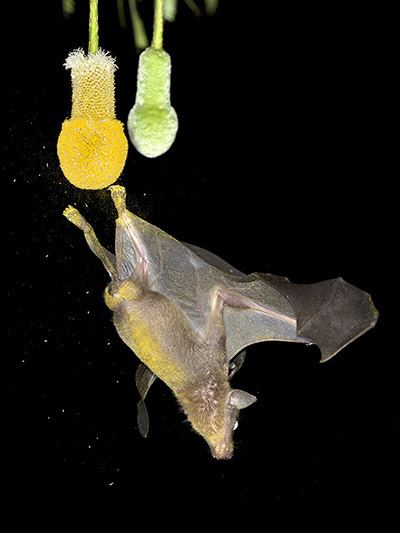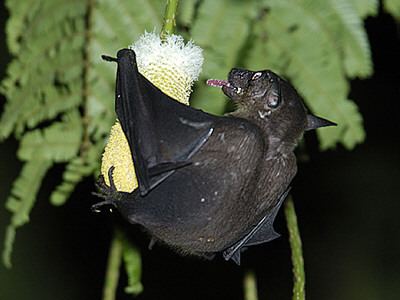Order Chiroptera Higher classification Eonycteris | Phylum Chordata Family Pteropodidae Scientific name Eonycteris spelaea Rank Species | |
 | ||
Similar Bat, Long‑tongued nectar bat, Megabat, Macroglossus, Long‑tongued fruit bat | ||
Cave nectar bat taking nectar from banana flowers closeup
Cave nectar bat (Eonycteris spelaea), common names also include dawn bat, common dawn bat, common nectar bat and lesser dawn bat , is a species of megabat within the genus Eonycteris. The scientific name of the species is first published by Dobson in 1871.
Contents
- Cave nectar bat taking nectar from banana flowers closeup
- Cave nectar bat cavendish flowers closeup top
- Description
- Habits and Habitat
- Distribution
- References

Cave nectar bat cavendish flowers closeup top
Description

The upperparts of the Cave nectar bat are grey-brown to dark brown to black. The underparts are paler and the neck is sometimes yellowish brown. The muzzle of this bat is elongated, and particularly adapted for drinking nectar. The species has as well an external tail. The head and body length measures 8.5–11 cm (3.3–4.3 in), the tail length is about 1.5–1.8 cm (0.59–0.71 in) and the forearm length measures 6–7 cm (2.4–2.8 in)
Habits and Habitat

The Cave nectar bat is found in primary forests and in disturbed and agricultural areas. It roosts in caves, in larger groups, with some roosts exceeding 50,000 individuals, and it sometimes roosts with other bat species. But in some places, this species seems to have adapted well to leafy, semi-urban habitats. E. spelaea travels many kilometres each night in search of the nectar of flowering trees and shrubs. Because of that, this bat species is an very important pollinator of fruit trees, such as durian.
Distribution

E. spelaea lives in Brunei, Cambodia, Indonesia (Java, Kalimantan, Sumatra, Sulawesi and some other small islands), Laos, Malaysia, Myanmar, Philippines, Singapore, Thailand, Vietnam, China, India and Timor-Leste. It had been previously recorded from Gomantong, Sukau, Segama and Madai in Sabah; Niah, Sungai Tinjar and Kuching in Sarawak; and Sungai Tengah and Kutai in Kalimantan .
